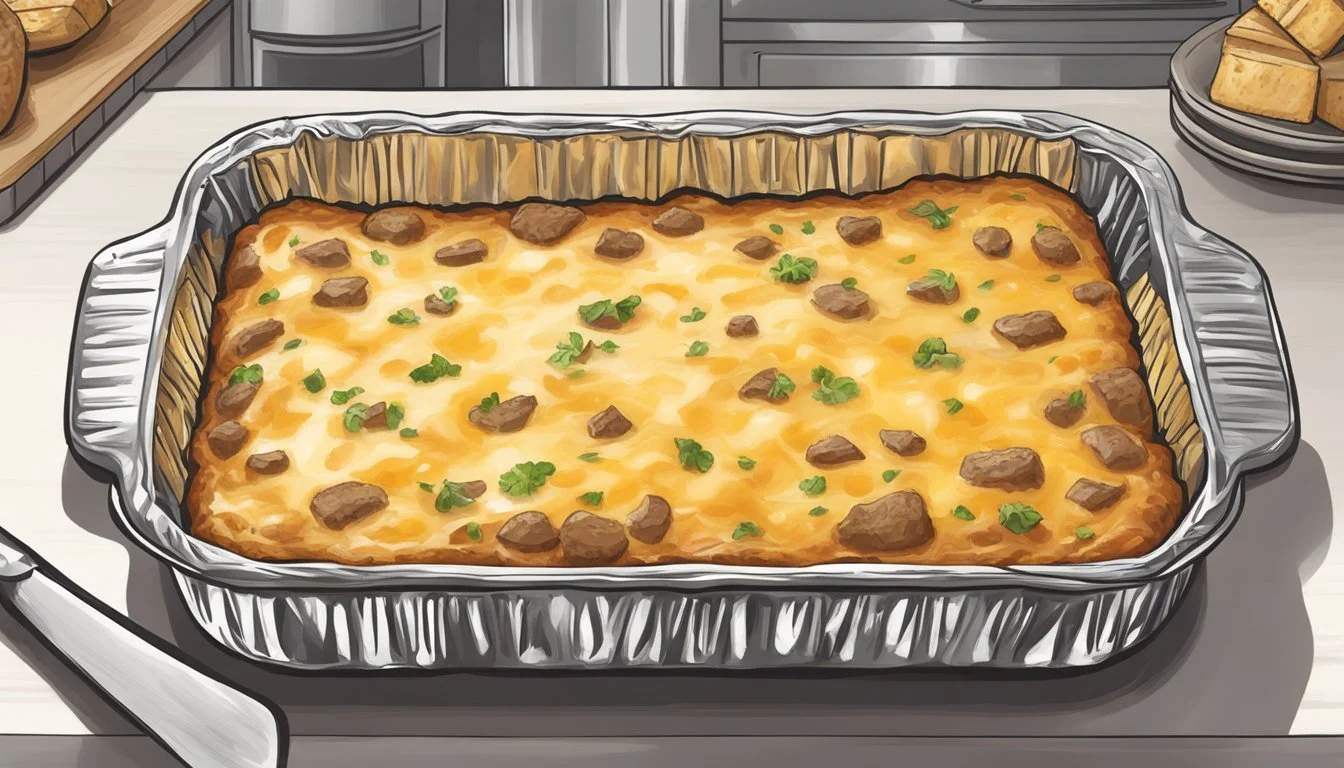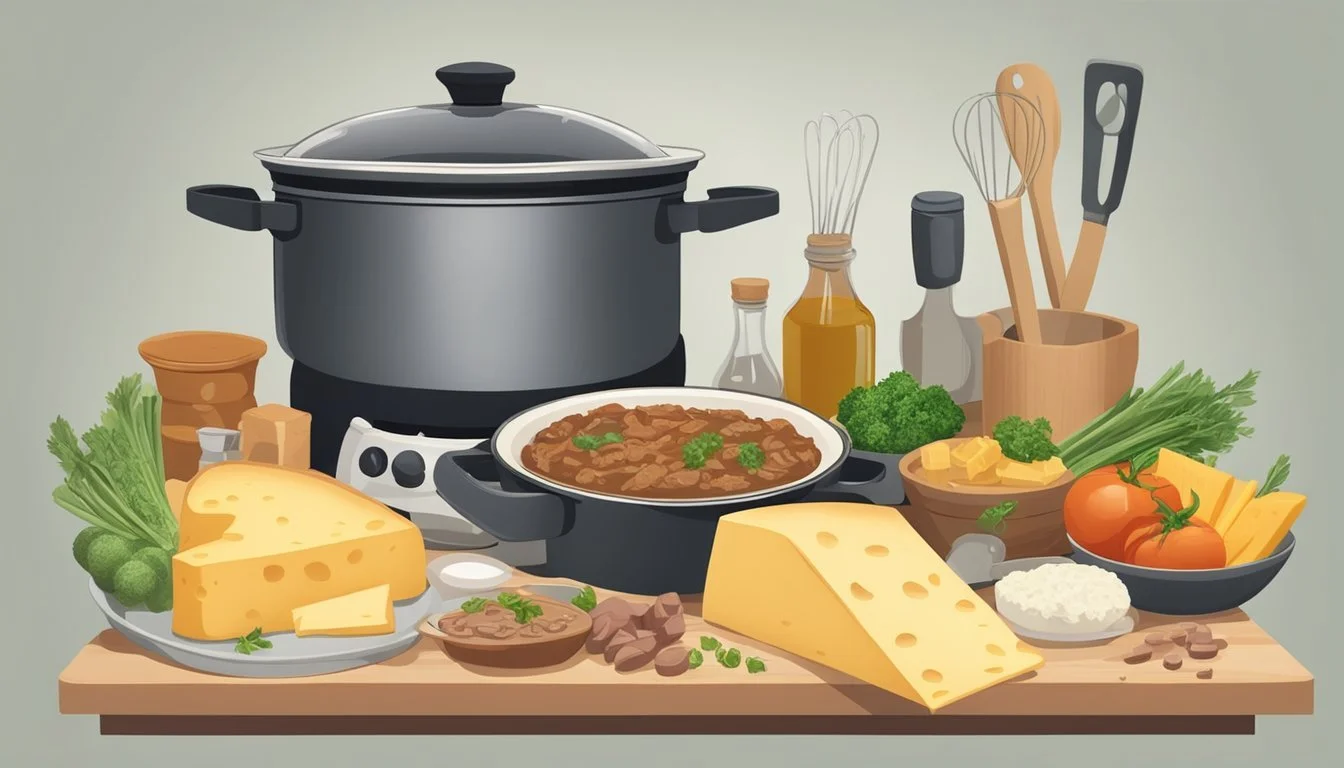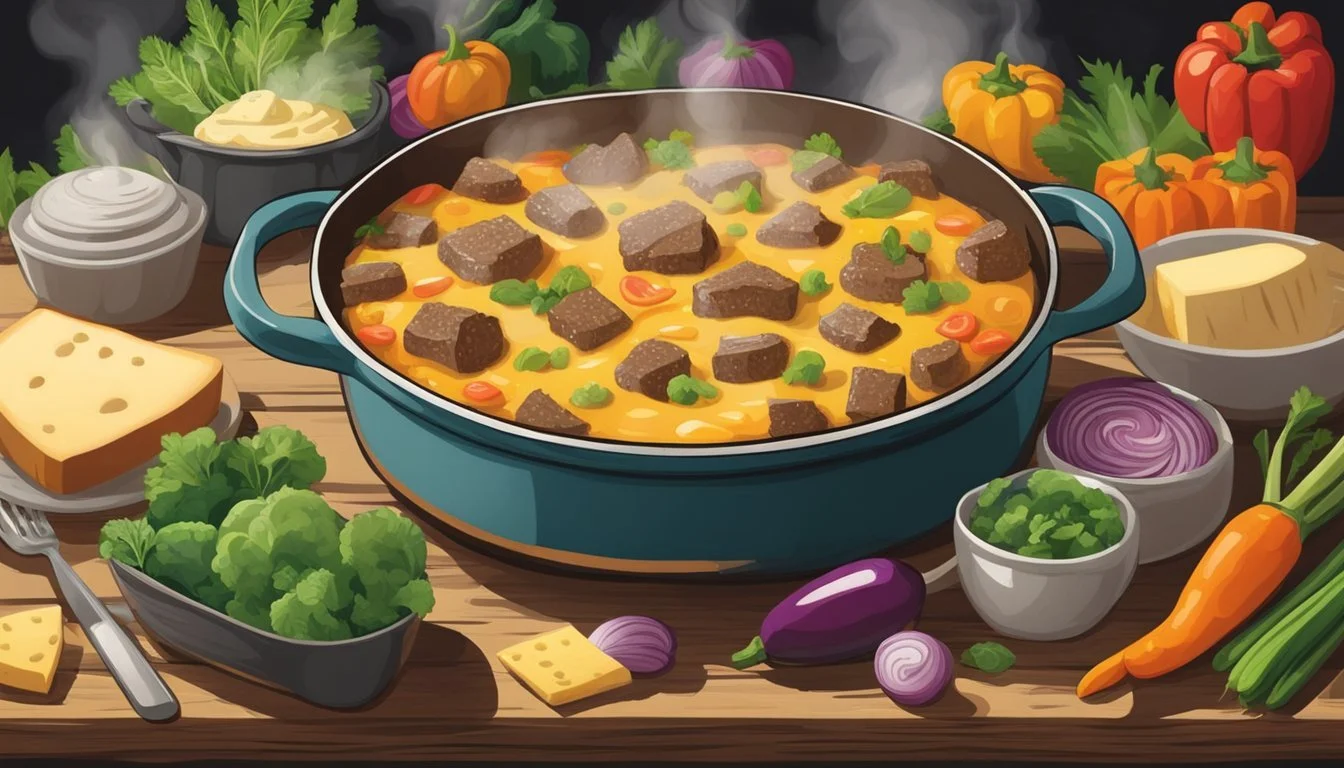How Long Does Beef and Cheese Casserole Last?
Storage Tips and Shelf Life Explained
Wondering how long your beef and cheese casserole will stay fresh? This hearty dish can be a crowd-pleaser, but ensuring its safety is crucial. Beef and cheese casseroles can last in the refrigerator for 3 to 4 days when stored in an airtight container. Beyond this period, the risk of spoilage increases, and it’s best to avoid consuming it to prevent foodborne illnesses.
For longer storage, consider freezing your beef and cheese casserole. Properly stored, it can remain safe and retain its quality for up to 3 months in the freezer. Make sure it's well-wrapped to avoid freezer burn, which can affect the flavor and texture of the casserole.
Being aware of food safety practices is key when handling leftovers. Keeping track of expiration dates and storage conditions ensures your dishes remain safe and delicious for later enjoyment.
Understanding Casseroles
A casserole is a versatile dish that typically combines several ingredients into a single baking dish. These dishes are cooked in an oven and often served as a one-pot meal, making them convenient for family dinners.
The ingredients in a casserole can vary widely but often include a protein like beef, a starch such as pasta or rice, and a variety of vegetables. Cheese is a common addition for both its flavor and its ability to help bind the ingredients together.
Oven baking is essential for casseroles. The process typically involves mixing the ingredients, placing them in a casserole dish, and baking them until fully cooked. This allows the flavors to meld together and often results in a bubbly, golden-brown top layer, especially when cheese is involved.
Casseroles can be a great way to use leftovers, making them economical as well as delicious. They are also highly adaptable; ingredients can often be substituted to fit dietary needs or personal preferences.
Cooking times for casseroles vary. They generally bake at temperatures around 350°F to 400°F (175°C to 205°C). It’s crucial to follow recipe guidelines to ensure even cooking and proper food safety.
Here’s a basic example of casserole preparation:
Ingredients: Ground beef, pasta, tomato sauce, cheddar cheese, green peppers.
Oven: Preheat to 400°F.
Bake: About 35-40 minutes until bubbly and browned.
Properly cooked casseroles can be stored in the refrigerator for up to 3-4 days. Always ensure they are covered tightly and reheated thoroughly before consuming.
This flexibility and ease make casseroles a staple in many households, combining ease of preparation with nutritious and hearty meals.
Health and Safety Considerations
When handling a beef and cheese casserole, paying attention to food safety is crucial. Storing the casserole promptly after cooking can prevent the growth of harmful bacteria. Place the dish in the refrigerator within two hours of preparation.
Refrigerate the casserole at or below 40°F (4°C). Using a thermometer ensures the fridge maintains an appropriate temperature. A beef and cheese casserole can generally last for 3 to 4 days in the fridge. If you're unsure, refer to the expiration date of the ingredients used.
If you need to extend its shelf life, freezing is a good option. A properly stored beef and cheese casserole can last up to 2-3 months in the freezer. Make sure it is tightly wrapped or stored in airtight containers to prevent freezer burn and cross-contamination.
When reheating, the internal temperature should reach at least 165°F (74°C) to ensure it's safe to eat. Using a food thermometer can help verify this. It's essential to avoid leaving leftovers out at room temperature for extended periods, as this significantly increases the risk of foodborne illnesses.
Following these guidelines can help ensure your beef and cheese casserole remains safe and delicious to eat throughout its storage period.
Preparation and Cooking
Beef and cheese casserole requires careful preparation and cooking to ensure it is both safe and delicious. Key aspects include preparing ingredients, handling raw proteins, and following precise oven instructions.
Prep and Bake
Start by gathering all necessary ingredients. Typical ingredients include ground beef, cheese, onions, garlic, and pasta or rice.
Begin by preheating the oven to around 350°F (175°C). Cooking the ground beef and onions in a skillet until the beef is well-browned and the onions are tender is crucial.
Next, mix in garlic and any choice of marinara sauce. Combine these cooked ingredients with cheese and pasta/rice in a baking dish. This mixture should be evenly distributed to ensure consistent flavor throughout.
Raw Ingredients
When working with raw beef, it is essential to handle the meat safely.
Raw beef should be refrigerated and used within 1-2 days. Always keep raw proteins separate from other ingredients to prevent cross-contamination. Using fresh, high-quality beef will enhance the flavor of your casserole.
Cheese should be grated and ready to incorporate into the mixture. Common choices include cheddar, mozzarella, and parmesan. The combination of cheeses can be adjusted based on personal preference but ensure that they blend well with the other components of the casserole.
Oven Instructions
Bake the casserole in a preheated oven at 350°F (175°C) for approximately 30-40 minutes. This time ensures that the cheese melts properly and the flavors meld together.
Cover the casserole dish with foil to prevent the top from burning. Mid-way through cooking, remove the foil to allow the top to brown and crisp.
Check for doneness by ensuring the center is hot and the cheese is bubbly and slightly browned.
By following these straightforward steps, a perfect beef and cheese casserole can be achieved every time.
Storing the Casserole
Proper storage of a beef and cheese casserole ensures it remains safe to eat and retains its flavor. To avoid spoilage, it's important to understand the necessary steps for both refrigeration and freezing.
Refrigeration Guidelines
When storing a beef and cheese casserole in the fridge, it's essential to cool it completely before refrigerating. This helps prevent condensation and bacterial growth. Once cool, cover the casserole dish tightly with plastic wrap or foil to keep it airtight.
A beef and cheese casserole can stay in the fridge for up to 3-4 days. Ensure it is stored on the top shelf where the temperature is most consistent. Label the casserole with the date of preparation to keep track of its freshness.
For extended storage, freezing is an option. Wrap the casserole in both plastic wrap and foil to prevent freezer burn. Use freezer-safe containers for best results, and keep the casserole in an area with minimal temperature fluctuation. When ready to use, thaw the casserole in the fridge overnight before reheating.
Reheating Suggestions
When reheating a beef and cheese casserole, it's important to use the right methods to ensure even heating and food safety.
Oven Method
Preheat your oven to 350 degrees Fahrenheit (175°C).
Cover the casserole with foil to maintain moisture.
Bake for 20-30 minutes until the internal temperature reaches 165 degrees Fahrenheit, ensuring it’s safe to eat.
Microwave Method
Place individual slices on a microwave-safe plate.
Cover with a damp paper towel to retain moisture.
Heat on 40-50% power for 2-3 minutes per slice, checking regularly to avoid overcooking.
Food Safety Tips
Always check the internal temperature with an instant-read thermometer.
Ensure leftovers are refrigerated within two hours of cooking and consume them within 3-4 days.
Using these methods ensures your beef and cheese casserole is reheated safely and deliciously.
Common Queries
Understanding the shelf life, expiration dates, and proper defrosting of a beef and cheese casserole is crucial for maintaining its quality and ensuring safety.
Expiration and Consumption
Beef and cheese casseroles with cooked meat should typically be consumed within 3-4 days when stored in the refrigerator. If it contains raw meat, consume within 1-2 days. Always check for signs of spoilage like off smells or discoloration.
Freezing extends the shelf life. A casserole can be frozen for up to 3 months. Ensure it’s stored in an airtight container or wrapped tightly in foil to prevent freezer burn.
When reheating, the internal temperature should reach at least 165°F (74°C) to ensure safety. Always refrigerate leftovers promptly, ideally within 2 hours of cooking to prevent bacterial growth.
Defrosting Procedures
To defrost a beef and cheese casserole, transfer it from the freezer to the refrigerator. This allows slow and safe thawing, which can take 24-48 hours depending on the size.
For quicker methods, use the defrost setting on a microwave, but cook immediately afterward to avoid any bacteria growth. Avoid leaving the casserole to defrost at room temperature, as this can allow harmful bacteria to multiply rapidly.
After defrosting, bake the casserole at the recommended temperature until it reaches an internal temperature of 165°F (74°C) to ensure it is fully reheated.
Additional Tips and Tricks
Proper Storage: Store beef and cheese casserole in an airtight container in the refrigerator. It should last for about 3-4 days.
Freezing Tips: For longer shelf life, freeze portions in airtight containers or freezer bags. This can extend its life to 2-3 months. Thaw in the refrigerator overnight before reheating.
Reheating: Reheat in the oven at 350°F (175°C) until warmed through. Cover with foil to prevent drying out. If you’re in a hurry, the microwave works too, but might alter the texture slightly.
Make-Ahead: Prepare the casserole a day before baking. This allows the flavors to meld better. Simply cover and refrigerate until you are ready to bake it.
Grain Alternatives: Use different types of pasta or grains like quinoa or rice for variety. Cook them al dente to prevent them from becoming mushy during baking.
Flavor Enhancements: Add some fresh herbs like basil or parsley for an added burst of flavor. Fresh garnishes can brighten up the dish.
Cheese Variations: Experiment with different cheeses. A mix of cheddar, mozzarella, and Parmesan can make the casserole richer and more flavorful.
Avoid Overfilling: Fill your casserole dish only up to ¾ full. This prevents the dish from bubbling over and becoming soggy.
Texture Tricks: For a crispy top, add breadcrumbs mixed with melted butter before the final bake. This gives a pleasant crunch to each bite.
Portion Control: Consider dividing the casserole into smaller, individual portions before storing. This makes reheating more efficient and reduces waste.
Special Variants and Ideas
Casseroles offer a versatile canvas for numerous creative twists. Some alternative ideas below present exciting ways to please the palate while catering to various preferences and dietary needs.
Alternative Casserole Ideas
Chicken Cordon Bleu Bake:* This dish combines chicken, ham, and Swiss cheese for a hearty meal. Layer with a creamy sauce and bake until bubbly. Perfect for family dinners and potlucks.
Taco Spaghetti: Mix ground beef with taco seasoning, pasta, and tomato sauce. Top with cheese and bake. This fusion dish blends Mexican and Italian flavors, making it an ideal comfort food for gatherings.
Meatless Veggie Casserole: For a vegetarian option, use a rich medley of veggies like zucchini, bell peppers, and mushrooms. Add a cheesy topping for an indulgent twist. Great for a light yet satisfying dinner.
Troubleshooting Casseroles
When preparing casseroles, various issues can arise. Here are common problems and ways to fix them.
Sometimes casseroles turn out mushy. This often happens if there is too much liquid. To fix this, reduce the amount of liquid added or ensure any added components like vegetables are sufficiently drained.
A crunchy topping can elevate a casserole but can be tricky. If the topping isn’t crunchy, try adding elements like breadcrumbs, crushed crackers, or nuts. Bake uncovered for the last 10-15 minutes to achieve the desired texture.
If the casserole becomes soggy, it may be due to excessive moisture. Ingredients like pasta or vegetables can release water during baking. Pre-cook or partially dry these ingredients before assembly.
Dry casseroles are a common issue. To enhance moisture, add more sauce or liquid components. Layering with cheese or incorporating a béchamel sauce can also add needed moisture.
Burnt edges can ruin a perfectly good casserole. To prevent this, cover the casserole with aluminum foil during the initial baking period. For more even cooking, rotate the dish halfway through the bake time.
These troubleshooting tips help address common issues with casseroles, ensuring a delightful and consistent result.









